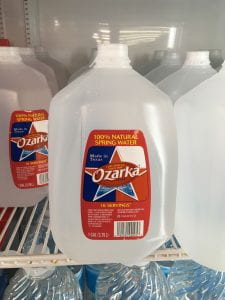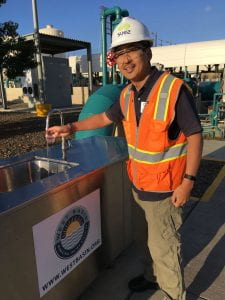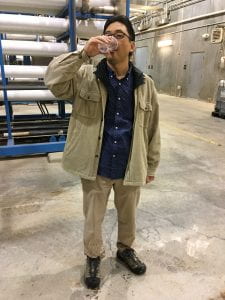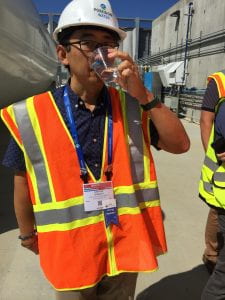University News Room Articles
Sipping Sustainably – A TXST pilot project converts sewage into drinking water – Hillviews Magazine Spring 2024
Episode 47: Wastewater reuse with Keisuke Ikehata – Big Ideas TXST Podcast
Faculty Research Spotlight – Summer 2021
University News Releases
TXST Researchers Honored by Texas American Waterworks Association (TAWWA) at Texas Water 2025 Conference – April 14th, 2025
USBR Grant Funds Research into Photobiological Process to Improve Desalination – April 26th, 2024
USBR Grant Funds Research into Contaminant Detection for Water Reclamation Systems – January 21st, 2021
Diatom Research Could Prove an Innovative Key to Improving Efficiency of Desalination – July 6th, 2020
Video Clips
Water Conversation with Dr. Ikehata – Texas State University – April 20th, 2025
Drinkable Wastewater – Greater San Marcos Partnership 2024 Innovation Summit – July 11th, 2024
Current Research Areas
- Photobiological Process for Reverse Osmosis Concentrate Treatment and Minimization
- Water Quality Management Using Online/Real-time and and Mobile Analyzers
- Taste, Odor, and Appearance of Drinking Water and Purified Water
- Ozonation and Advanced Oxidation Processes for Water and Wastewater Treatment and Water Reuse
- Direct Potable Use of Storm Water and Reclaimed Water – Closed Loop Potable Reuse and Beyond “One Water”
Keywords
- Drinking water quality and water supply
- Advanced water purification
- Indirect and direct potable reuse (IPR and DPR)
- Brackish and seawater desalination
- Reverse osmosis (RO) and nanofiltration (NF)
- Ozonation and advanced oxidation processes (AOP)
- Potable water aesthetics (taste, odor, and appearance)
- Biological water treatment
- Water for space colonization
Mission: To Develop Innovative Technologies for Sustainable Water Resources Management
Vision: Safe and Tasty Water for Humans and Clean Water for the Environment
Philosophy:
Water is vital to all life forms on earth and important to society. The economic growth and development, as well as the scenic beauty and natural wildlife, are all dependent on our precious water resources. However, the rapid growth is posing a major threat to the quality and quantity of the water resources in many parts of the United States and around the world by over-pumping from the aquifers and nutrient and other contaminant loading from municipal, agricultural and industrial discharges and various non-point sources. The main theme of our research group is to develop new technologies for the responsible and sustainable use of our precious water resources for us and our future generations.
As an applied chemist by training, I always view natural water as a chemical substance H2O with various dissolved and suspended chemical substances and microscopic organisms (microorganisms). Thanks to the technologies developed in the 20th century, it is technically feasible for us to clean any water, including wastewater and seawater, to make it potable (= drinkable). The prime example is the water recycling system in the International Space Station where 6 astronauts are drinking purified wastewater (including sweat!) every day. Here is an interesting fact: sending 1.0 gallon (3.8 L) of water to the orbital would cost more than $10,000 with Space X’s Falcon 9!
For 6 people to live for one year, they need about 220,000 gallons of water (= 6 people x 356 days x 100 gallons per person per day), which would cost about $2.2 million to deliver one-way. Don’t forget… we would also need to bring the wastewater back to the earth. It makes more sense to spend millions of dollars to build a highly sophisticated water recycling system to be used in the Space Station.
I believe that it is ideal for us to build a similar closed-loop system on the earth so that we do not stress or contaminate the environment. The closed-loop water reuse is clearly technically feasible… however, not economically feasibility for average earthlings like us.
Currently, around 20 full-scale advanced water purification facilities (AWPFs) are operational in the United States, which produce highly purified recycled water for indirect and direct potable reuse. I visited about one third of them so far, including:
- Orange County Water District (OCWD) – Groundwater Replenishment System (GWRS), Fountain Valley, CA
- Water Replenishment District of Southern California (WRD) – Leo J. Vander Lance Water Advanced Water Treatment Facility, Long Beach, CA
- West Basin Municipal Water District (WBMWD) – Edward C. Little Water Recycling Facility, El Segundo, CA
- City of Oxnard – Advanced Water Purification Facility, Oxnard, CA
- City of San Diego – Pure Water San Diego (Demonstration Facility), San Diego, CA
- City of Scottsdale – Scottsdale Water Campus Advanced Water Treatment Plant, Scottsdale, AZ
- City of Rio Rancho – Rio Rancho Advanced Water Treatment Facility, Rio Rancho, NM
- Colorado River Municipal Water District (CRMWD) – Raw Water Production Facility, Big Spring, TX
These AWPFs are mostly located in the coastal areas like Southern California. There are a number of technical challenges, such as brine (concentrate) management, water quality monitoring, and water resources management. Obviously, more technical advancements in many areas of water science and engineering are required to achieve economically feasible and truly sustainable water supply systems for 330 million people in the United States and 7.5+ billion people on the earth. Our goal is to develop various new technologies for water treatment system design, construction and operation in the 21st century and beyond. Please contact Dr. Ikehata if you are interested in our research and joining our team as a graduate student, a postdoc, a collaborator, or a supporter.







